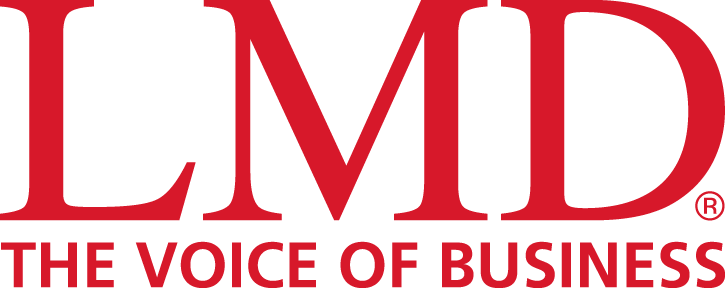BRAND INFLUENCE

Compiled by Tamara Rebeira
PLAYING THE ENGAGEMENT CARD
Gayani Perera underlines the importance of meaningful customer engagement
Q: How do you measure the success of a PR or marketing campaign beyond traditional metrics?
A: While traditional metrics such as reach, impressions and engagement are essential, organisations must go beyond them to assess the true impact of PR and marketing campaigns. Critical indicators such as consumer sentiment, brand recall and purchase decisions can now be measured through AI driven or machine learning based analysis.
Long-term brand loyalty, the effectiveness of advocacy programmes and alignment with corporate values are also critical to measure. Feedback from customer service, sales and support teams further validates campaign effectiveness while AI optimises customer segmentation.
Additionally, social listening tools should be utilised to monitor and analyse brand conversations across social media platforms. Assessing the performance of varying content types enables organisations to determine which formats resonate most with audiences and drive engagement. The impact of employee advocacy programmes must also be measured, as sharing content amplifies reach and credibility.
Competitor benchmarking enables organisations to compare campaign performance against industry peers, providing insights into market positioning and improvement. Mapping the customer journey helps track how campaigns influence each stage from awareness to conversion and retention.
Conducting a detailed ROI analysis helps organisations understand the financial impact of campaigns including both direct sales and long-term brand value. Furthermore, sentiment analysis tools can gauge the emotional tone of customer feedback and social media mentions, thereby providing deeper insights into public perception.
Q: How important is brand positioning in a highly competitive market?
A: In a highly competitive industry such as cement and construction, brand positioning is crucial.
Effective brand positioning involves understanding and addressing the specific needs and pain points of target audiences. By conducting thorough market research and analysing customer feedback, organisations can ensure that their products and services align with customer expectations and industry trends.
A clear and consistent message that resonates with customers, fosters emotional connections and builds trust helps organisations stay ahead of the competition. This messaging should be continuously reinforced to ensure consistency and alignment across all communication channels.
Q: And how should organisations integrate sustainability or social responsibility into PR and marketing strategies?
A: Sustainability and social responsibility should be at the core of marketing strategies. Organisations should integrate sustainability by showcasing real world initiatives that create a meaningful impact.
Moreover, reinforcing consumer trust and aligning with the growing preference for sustainable choices is essential.
Transparent communication about sustainability goals, progress and challenges builds trust and credibility. Organisations must ensure that their initiatives are genuine and deeply embedded in company culture and operations, demonstrating an authentic commitment to these values.
Storytelling is a powerful tool for highlighting sustainability efforts and their impact, fostering an emotional connection with audiences. Engaging employees in sustainability initiatives amplifies the message and showcases a companywide commitment.
Q: How important is it for organisations to stay ahead of industry trends and shifts in consumer behaviour?
A: The construction and cement industries are constantly evolving, driven by technological advancements, regulatory changes and shifting consumer preferences.
To stay competitive, organisations must invest in market research, monitor industry trends, and actively engage with stakeholders to anticipate and adapt to these changes.
Understanding customers’ evolving needs – whether they be the demand for eco-friendly products or innovative construction methodologies – is essential. Staying agile and proactive in marketing approaches ensures relevance in a rapidly changing industry.
Proactive adaptation is crucial to maintaining a competitive edge. By embracing new technologies and processes that enhance efficiency and sustainability, organisations can optimise operations and drive long-term success.
Additionally, closely monitoring shifts in consumer behaviour enables organisations to tailor products and services to meet evolving preferences. This customer centric approach strengthens relationships and fosters brand loyalty.
Q: How do you tailor marketing strategies for different platforms such as social and traditional media, and digital advertising?
A: Different platforms require distinct messaging and content formats. On social media, interactive content, storytelling and real time responses engage audiences. These foster direct interactions with audiences, thus enhancing brand loyalty and engagement.
Traditional media such as newspapers and TV establish credibility, and reach broader demographics. These channels are effective for building trust and authority, as they are often perceived as being more reliable. Additionally, traditional media amplifies reach to audiences who may not be as active on digital platforms.
Meanwhile, digital advertising leverages data driven targeting and personalised messaging. By utilising advanced analytics and segmentation, organisations can deliver highly relevant content to specific audience segments to maximise campaign effectiveness. This approach also allows for real time performance tracking, enabling data informed adjustments to optimise results.
Integrated campaigns must be run across multiple platforms, ensuring a cohesive and comprehensive approach. This reinforces the message across different touch points and creates a seamless experience for audiences.
Customising content for both digital and traditional media while maintaining a consistent brand identity through a unified tone, visual style and core messaging helps a brand to remain unique and drive meaningful results.






